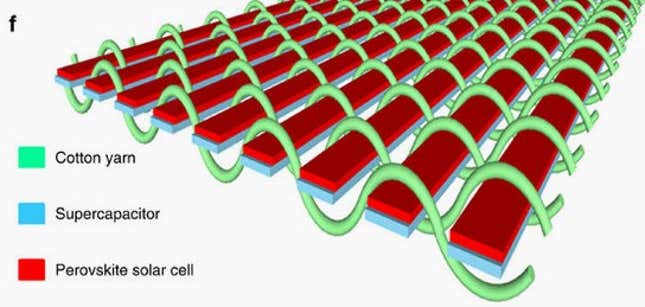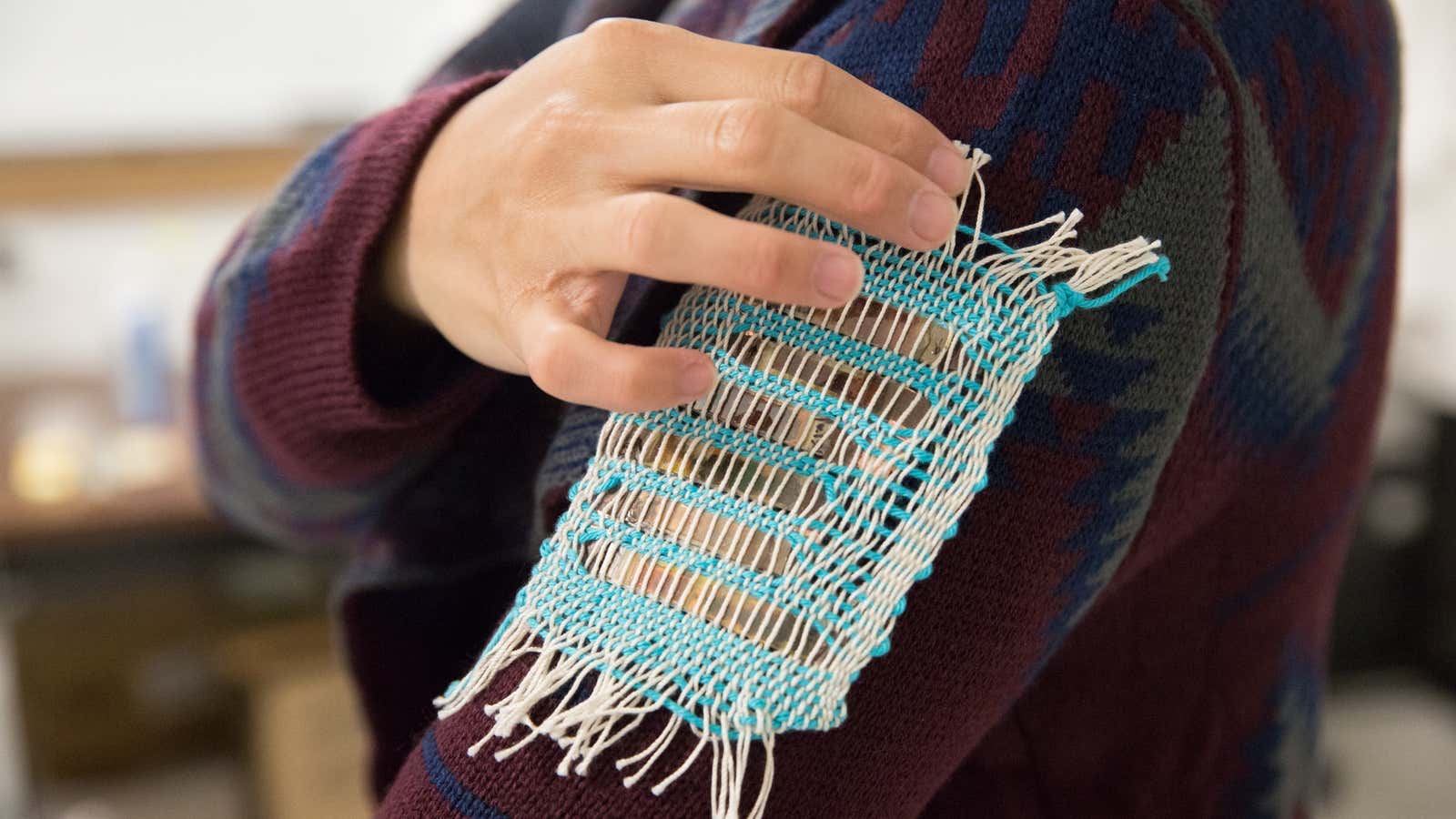When it’s sunny out, there’s energy all around us. But right now, portable solar panels generally can’t store the energy they produce. It either has to flow into a device directly, or requires a separate, heavy battery to store it, making solar power still a work in progress for everyday consumer use.
But a group of nanotechnology scientists have created copper “ribbons” that are thin and flexible enough to be embedded in a woven fabric, and capable of harvesting and storing solar energy simultaneously. The innovation could prove important for making wearable tech self-powering—as long as it’s sunny out, anyway—and means a greater possibility that one day you’ll be able to buy a solar-powered jacket that can charge your phone.
“The most important thing is the portability of this device,” says Dr. Jayan Thomas, a scientist at the University of Central Florida’s NanoScience Technology Center and the lead researcher on the project. ”Instead of having two separate devices, we integrated [the solar cell and storage battery] into a single filament.”

The filament is made of a solar cell and an energy-storing supercapacitor that share an electrode, and several can be held together with interwoven yarns. Thomas, who won an award last year for designing an electrical cable that can both transmit and store energy, and his team created their prototype using a small tabletop loom.
The motivation behind the technology, he says, was Marty McFly’s self-lacing Nike sneakers in the 1989 movie Back to the Future II. (Nike made those sneakers a reality this year, though they operate on a battery that you have to plug in to charge.) But the uses go beyond charging phones or powering novelty sneakers. The technology could be useful to the military, as it would allow soldiers to cut back on the heavy batteries they carry to power equipment in the field, and could also be used for drones and electric vehicles.
Thomas says they’re still working on how to “package” the solar cell and supercapacitor efficiently, and on making it more flexible. Right now “you cannot completely bend it,” he explains. If it’s used in clothing it will presumably also have to withstand a cleaning at some point, which he says he and his team “haven’t looked at so far.”
But it could be a step toward a future when you can finally stop worrying about remembering to take your charger with you.
